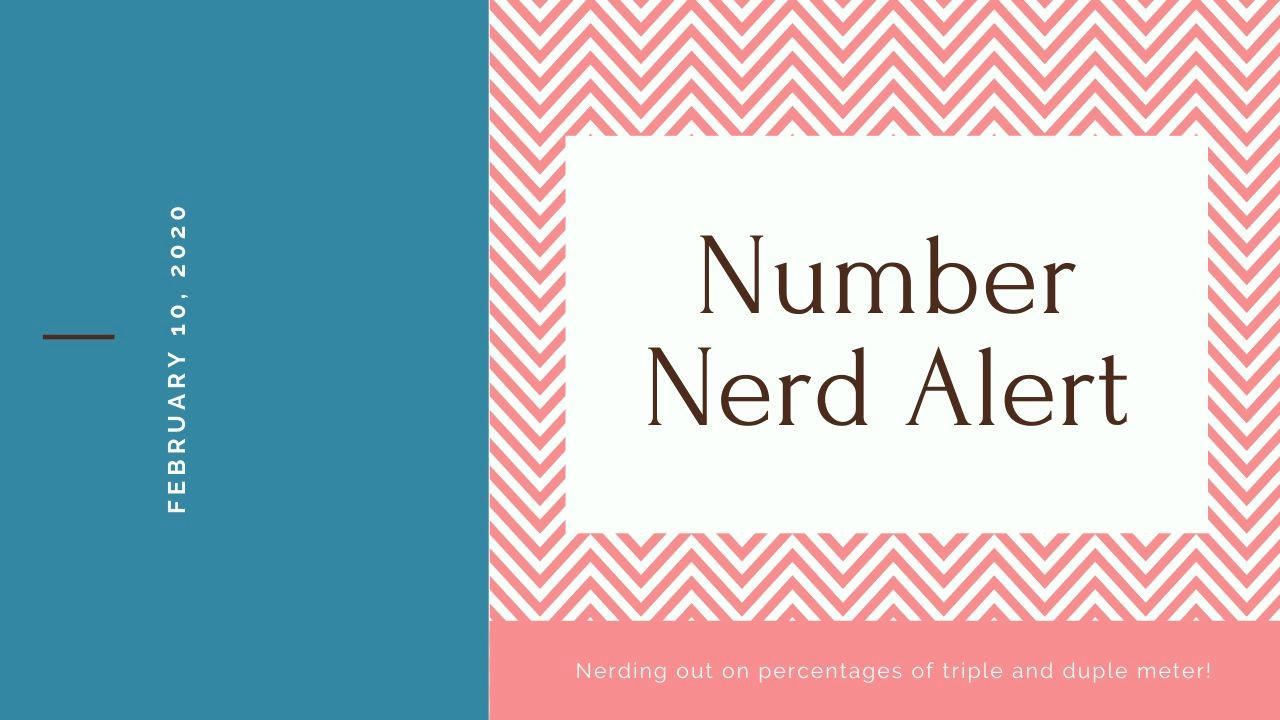
#14: I'm a Numbers Nerd, just going to own it right now!
Feb 10, 2020So, I was working on my music training course (which is NOW released called The Official Music Training Course for Ballet Teachers) and was curious on the break down of all the music; how much of it was duple and how much of it was triple. I popped them all into a graph and it was so interesting that I had to share! FYI: this list is not exhaustive, but, for your purposes of teaching on the fly, it's probably as exhaustive as you want it to be! lol (Feel free to email me if you think of music that should be in the course, and it's not!)

The first thing that I found interesting was how much of the music that we use in the studio is triple meter based! Notice that the 3/4s are 40% and the 6/8s are 13.3%. First thought is that added up, they're only 53.3%. That's just over half, not so crazy, right? But then, if we add in the compound time pieces (9/9, 7/8 and the 12/8 depending how you count it), we're looking 58.3%.. Almost 60% of the music we use is triple meter. If you find yourself drifting there, it's no wonder! With a little bit of mental math, you can figure out that the duple meter selection is therefore, only 41.7% of the music that you have to pick from. Again, it becomes so obvious why teachers end up in triple meter often!
A second interesting observation is that there are 7, give or take, tricky rhythms to count in the triple meter, while the duple meter contains 10, give or take. Percentage wise, 39% of the triple meter family is tricky to count, while 71% of the duple meter is tricky. That is insane! No wonder we gravitate to the triple meter music, if you're not confident in your ability to count and mark some of this music, you could be avoiding it and defaulting to the 3s simply because of the high rate of 'I don't know how to count/use it' factor!
So, there you go, you just got a glimpse into my nerdy number brain (yes, I LOVE numbers and patterns, hence my love for my job!). The next time you're working on setting a class or creating on the fly, consider this information and force yourself to be a little more duple creative, it's good for your students, and it's good for you!
Stay connected with news and updates!
Join our mailing list to receive the latest news and updates from our team.
Don't worry, your information will not be shared.
We hate SPAM. We will never sell your information, for any reason.

